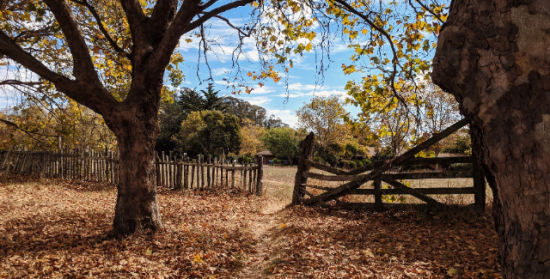
- News from the University Librarian
- Making Course Materials More Accessible for Students
- Hands-On Instruction and Arts-Based Research with Special Collections & Archives
- Selections of the Season: Inside the Collectors Club’s Annual Gathering
- Mark your calendars for this year’s Giving Day: November 5, 2025
- In memoriam: Judy Steen & Michael Cowan
News from the University Librarian
Dear Friends and Supporters,
I joined UC Santa Cruz in 2008 as the Associate University Librarian for Public Services. In 2013, I was asked to serve as Interim University Librarian, and in 2014, I was fortunate to be selected as the University Librarian following a national search. Since then, I’ve had the privilege of working alongside exceptional colleagues, students, and faculty to advance the mission of the library as a cornerstone of research, learning, and student success. One of the proudest moments of my tenure was UC Santa Cruz’s 2022 invitation to join the Association of Research Libraries—a recognition of the library’s growing impact and national stature.
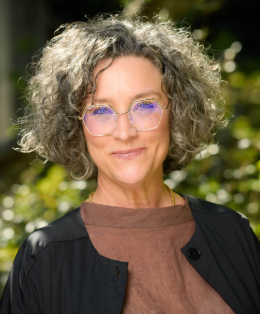
I am deeply grateful to the generous donors who helped expand our collections, programs, and spaces. In 2014, we launched the Elisabeth Remak-Honnef Center for Archival Research and Training (CART), which trains graduate students in archival work and has helped uncover and preserve important aspects of our university’s history. The creation of the Richard L. Press University Librarian Presidential Chair in 2015 was a pivotal moment, providing permanent support for library archives and new initiatives. Thanks to donor support, we renovated the top and bottom floors of the Science & Engineering Library and transformed the space into a dynamic environment that celebrates both academic legacy and innovation.
As I look ahead to my retirement at the end of this calendar year, I do so knowing the library will be in excellent hands. I am pleased that Kerry Scott, a trusted colleague and dedicated leader in our library for over two decades, will serve as Interim University Librarian beginning in January 2026. Since joining UCSC in 2001 from the University of Arizona, Tucson, she has held a variety of key leadership roles, including Head of Research Support Services. Kerry has been the Associate University Librarian at UC Santa Cruz since 2016. She holds an M.A. in Library and Information Science from the University of Arizona, an M.A. in East Asian Studies from Washington University in St. Louis, and a B.A. in East Asian Studies from Beloit College. Kerry’s deep experience and commitment to the library’s mission will guide the University Library forward with strength and vision.
I want to extend my deepest gratitude to all of you. Thank you for the support, collaboration, and inspiration throughout my time here. Serving UC Santa Cruz has been the most rewarding chapter of my career, and I will always carry this community with me.
With deepest gratitude,
M. Elizabeth Cowell
Richard L. Press University Librarian Presidential Chair
Making Course Materials More Accessible for Students
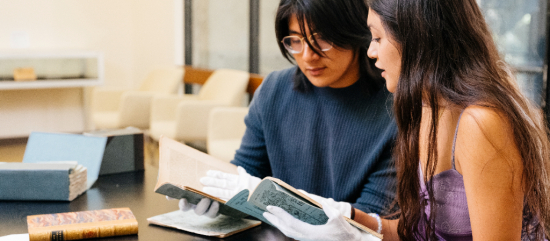
This January, the University Library launched an Open and Equitable Course Material Community of Practice for instructors to learn about affordable and free alternatives to traditional textbooks, as well as support each other in finding and customizing these materials. Many students feel overwhelmed by the high cost of course materials that are crucial to their academic success. UCSC undergraduate students are estimated to pay over $1,200 for textbooks, homework platforms, and other required materials this academic year. High costs can force our students to enroll in fewer classes or withdraw from expensive classes altogether.
UCSC’s Community of Practice is part of a larger trend across the country where libraries invest in new models that support student success and offer sustainable alternatives to high-cost materials. The UCSC Community of Practice emphasized furthering equity in the classroom and encouraged instructors to make incremental, iterative changes to their materials, both of which were identified as campus needs when the University Library conducted focus groups with UCSC students and interviews with faculty to better understand needs in Fall 2023.
In this first iteration of the Community of Practice program, participating instructors edited their course materials to be more accessible and relevant to their students. Their work will reach hundreds of undergraduate students in required courses in Physics, Math, and Writing. As one example, Community of Practice participant and Physics Professor Amy Furniss has begun the process of moving from a for-cost homework platform that students had to pay to access, to a free platform with more inclusive examples that redefine who can participate in Physics as a discipline. In general, students pay an average of $90 for homework platform access codes, which are required to do their homework. While Professor Furniss was previously using a lower-cost platform, the cost continued to rise for students. By moving to a free homework platform that she can more easily customize with examples relevant to UCSC students, Professor Furniss is reducing costs and improving course content.
The University Library is proud to partner with instructors to further free access to course materials and create more accessible course material content. Both are important tools for improving student learning and advancing UCSC’s student success goals.
Editor’s note: If you are interested in making a donation to support access to course materials for students, please contact Liz White at lizwhite@ucsc.edu or make a gift online.
Hands-On Instruction and Arts-Based Research with Special Collections & Archives

This August, Instruction and Exhibitions Librarian Sam Regal collaborated with Karolina Karlic, Art Department faculty, to teach After Archives, a course exploring the meaning of archives and archival research methods in the context of contemporary art practice. Held in UCSC Special Collections & Archives, the course challenged students to expand their research skill sets by approaching archival materials as dynamic catalysts for creative interpretation and artistic response. At the end of the course, students created original artworks that reinterpreted and reimaged archival sources, emphasizing alternative histories, the impact of archival silences, and the role of artists in shaping public understanding of the past.
Students' archival research efforts centered on three curated themes: waterways, weather, and UCSC university history. Final projects, largely created collaboratively, included original artists' books, sculptures, performance pieces, and sound art, all in critical conversation with archives and archival practice. After sharing their work in a pop-up exhibition in Special Collections, they reflected on their experience:
“I had a lot of fun and learned a lot about artists' research in this class. Even in entering four years here, I had never

explored library/archival material this deeply before, and it's definitely something I will be doing more of in my last year here and wherever I go next.”
“Thank you for exposing me to this incredible resource that honestly I didn’t know existed. I feel like it opened the door for me to a new creative process that I’ll probably implement in a lot of my future work. Having access to so much tactile information is exciting. In this digital age, there’s definitely something beautiful and kind of romantic about holding old books, searching through a physical treasure trove, and being in the midst of so much creative and historic material. Not to mention the thousands of pieces of ephemera that ultimately hold memory in a powerful way. I’m grateful for the experience!”
Selections of the Season: Inside the Collectors Club’s Annual Gathering
The Collectors Club held its annual Selection Day on September 8th to help Special Collections & Archives choose which rare books, artworks, and other materials to acquire using the combined donations of its members. Thanks to our Collectors Club members, SC&A will be able to acquire the following items:

Fascist Party Games by Art Hazelwood (2025)
Helianthus by Gail Wight (Salt Point Press, 2023)
EMILY DICKINSON: Poems of Travel by Emily Dickinson (Melville Press, 2024)
A Simple Lesson by Dirk Hagner (Inkswine Press, 2023)
These pieces will support Sam and Teresa’s work with students who visit Special Collections & Archives, such as the Porter Core Class, which brings over 500 students into SC&A each fall.
If you are interested in joining the Collectors Club, please visit our website or contact Liz White, Director of Development at lizwhite@ucsc.edu.
Mark your calendars for this year’s Giving Day: November 5, 2025
Giving Day is a 24-hour fundraising event supporting students, organizations, research, resources, and more at UC Santa Cruz. We hope you will join us on November 5th
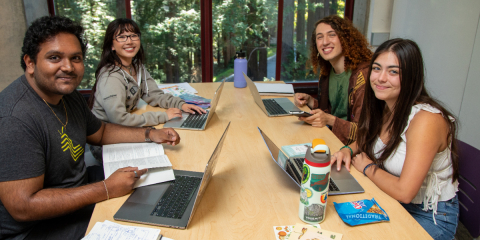
to support UC Santa Cruz students via the University Library. This year, we are looking for donations to the Library Acquisition Fund and the Digital Scholarship Innovation Studio.
A gift to the Library’s Acquisition Fund will help us expand access to textbooks, literature, film and media, and other essential course materials to UCSC students. The Digital Scholarship Innovation Studio (DSI) provides a space for UC Santa Cruz students to create, experiment, explore, and bring their imaginations to life. A gift to the DSI helps us provide free access to equipment and materials for UCSC students.
If you have any questions about Giving Day, please contact Director of Development, Liz White, at lizwhite@ucsc.edu.
We thank you for your support!
In memoriam: Michael Cowan & Judy Steen
In memoriam Michael Cowan

The UC Santa Cruz community mourns the passing of Professor Emeritus Michael H. Cowan (1937–2025), a beloved teacher, interdisciplinary scholar, and visionary academic leader whose contributions shaped the university in profound and lasting ways. He died in 2025 at the age of 88, leaving behind a rich legacy of intellectual rigor, institutional innovation, and deep commitment to public education.
In retirement, Cowan worked with the UC Santa Cruz Library’s Special Collections & Archives to support its efforts to tell the history of UC Santa Cruz and advance its mission for archival work.
“Michael was a stalwart champion of campus, with a particular focus on engaging with and learning from UCSC’s history,” said Teresa Mora, head of Special Collections. “A dear friend of Special Collections & Archives, he dedicated endless hours to reviewing and contextualizing our University Archives and was a stalwart champion of the program, establishing a named endowment to support the preservation of UCSC’s institutional history. His passion, inquisitiveness and kindness will be sorely missed by the numerous folks in the University Library who worked closely with him over the years.”
Cowan’s legacy lives on at the library as he had established a named library endowment the Susanna and David Cowan Endowment for UCSC Institutional History.
In memoriam: Judy Steen
We are saddened to share the news of Judy Steen’s passing in August. Judy served as a Reference Librarian at McHenry Library from 1972 to 1992. Over the years, she
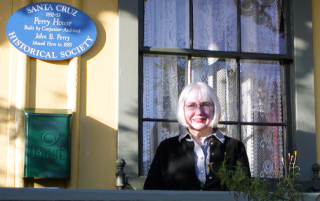
also took on roles in Acquisitions and Interlibrary Loan. She had a deep passion for teaching students how to conduct research and was unwavering in her dedication to helping them succeed with their projects.
It will come as no surprise that, as a child, Judy created her own “detective agency” and started a family newspaper. She was very involved in local history and historic preservation, her most recent project being a list of notable women in Santa Cruz County. Her husband Joe Michalak aims to finish and distribute the list soon in her honor so that others may use it as a starting point for their own research.
Judy was passionate about giving back to the community, seen through her work with local museums and the City of Santa Cruz Historic Preservation Commission. She was also the editor of the 3rd edition of John Chase's Sidewalk Companion to Santa Cruz Architecture. She will be missed, but her legacy will live on in her work.
We thank you, Judy.
Credits
Contributors: Elizabeth Cowell, Liz White, Sam Regal, and Sarah Hare
Production: Linda Hunt
Copyediting: Greg Careaga
Photography: Carolyn Lagattuta, Linda Hunt, Sam Regal, Elena Zhukova, and Alan Ritch


 Santa Cruz, CA
Santa Cruz, CA



